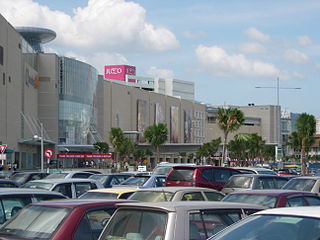 The World Bank is forecasting a slight slowdown for Developing East Asia Pacific this year, but believes the region, excluding China, will improve its economic performance next year and continue to be the fastest-growing region in the world.
The World Bank is forecasting a slight slowdown for Developing East Asia Pacific this year, but believes the region, excluding China, will improve its economic performance next year and continue to be the fastest-growing region in the world.
In its new East Asia Pacific Economic Update, the World Bank said Developing East Asia will grow by 6.9 percent this year and next, down from 7.2 percent in 2013.
In China, growth will ease slightly to 7.4 percent this year and 7.2 percent in 2015. Excluding China, growth in developing countries in the region is expected to bottom out at 4.8 percent this year, before rising to 5.3 percent in 2015, as exports rise and domestic economic reforms advance in the large Southeast Asian economies.
“East Asia Pacific will continue to have the potential to grow at a higher rate—and faster than other developing regions—if policy makers implement an ambitious domestic reform agenda, which includes removing barriers to domestic investment, improving export competitiveness and rationalizing public spending,” said Axel van Trotsenburg, regional vice president of World Bank East Asia and Pacific.
On a country basis, the World Bank said China, Malaysia, Vietnam, and Cambodia are well positioned to increase their exports, “reflecting their deepening integration into the global and regional value chains that have driven global trade in the last 20 years.”
The report revised the forecast for Malaysia to 5.7 percent, up from 4.9 percent in April, because of robust exports in the first half of the year. Cambodia is expected to grow at 7.2 percent in 2014, boosted by rising garment exports. Thailand is also expected to benefit from the global recovery, given its strong integration into global value chains—if the respite in political unrest is sustained.
But in Indonesia, which still relies on exporting commodities, growth will drop to 5.2 percent this year from 5.8 percent in 2013, constrained by falling commodity prices, lower-than-expected government consumption, and slower credit expansion.
In the Philippines, buoyant remittances pushed up private consumption, which accounts for more than half of the country’s overall growth, forecasted to be at 6.4 percent this year and 6.7 percent in 2015. Economic growth in Myanmar, with recent institutional and policy reforms and international re-engagement, will be at 8.5 percent this year and next.
Significant uncertainties remain that could affect the region’s growth, said the report. High-income economies, especially in the Euro zone and Japan, could face downside risks in the near term. Global financial conditions could tighten sharply, and international and regional geopolitical tensions could affect prospects. The region also remains vulnerable to a sharp slowdown in China.
“The best way for countries in the region to deal with these risks is to address vulnerabilities caused by past financial and fiscal policies, and complement these measures with structural reforms to enhance export competitiveness,” said Sudhir Shetty, chief economist of the World Bank’s East Asia and Pacific Region.
Photo: EricOng




